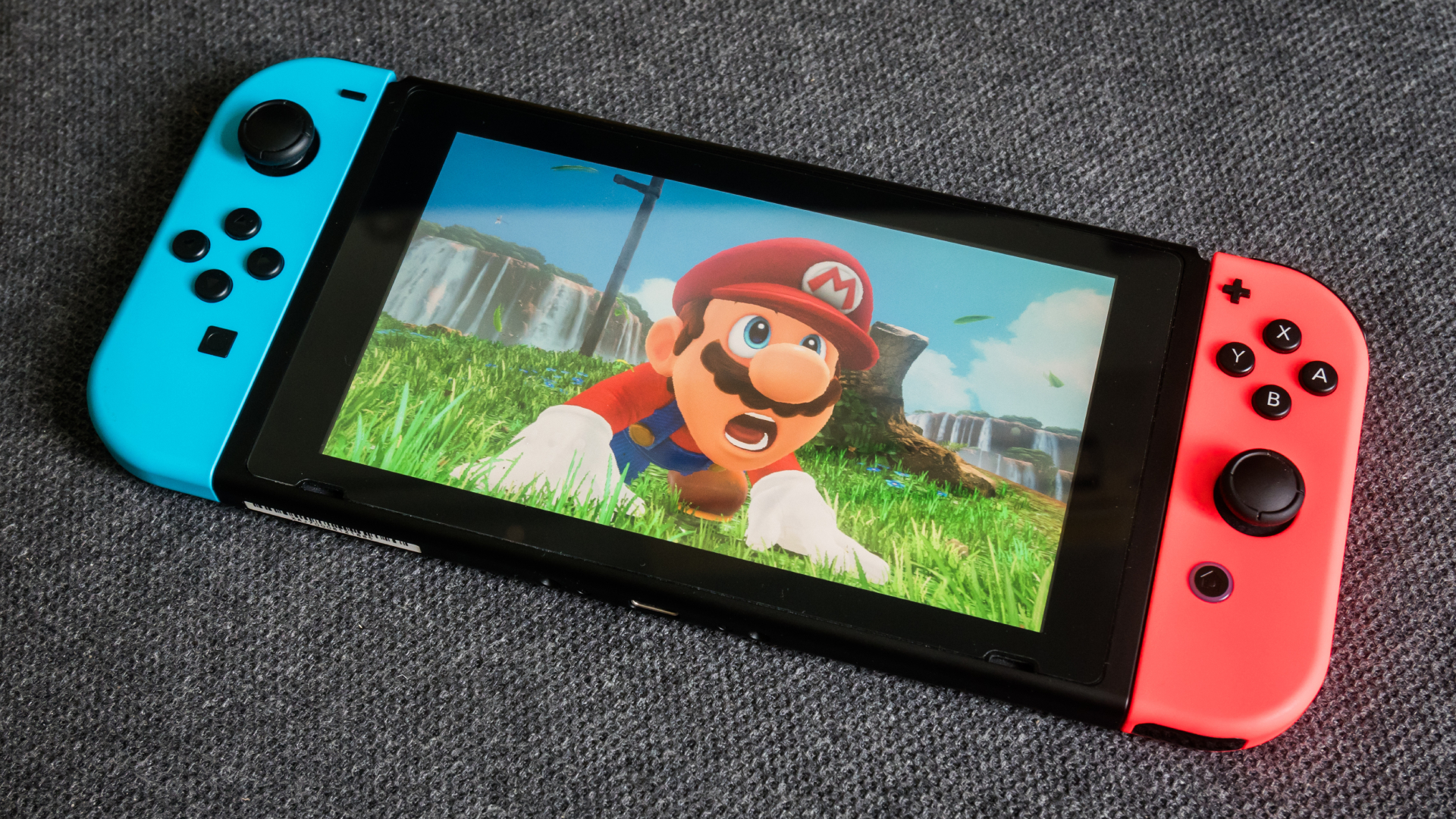Why you can trust TechRadar
Let's not forget Nintendo has designed some absolutely classic controllers in its time – the original NES controller wrote the blueprint that console controllers have followed ever since, the N64 was the first console to have a controller with an analogue thumb-stick, and the Wii (for better or for worse) introduced the world to motion-controlled gaming.
With the Nintendo Switch, Nintendo has attempted the seemingly impossible in creating a system that's simultaneously one whole controller and two separate controllers, while also functioning as controllers in the handheld mode.
Nintendo Switch Joy-Cons: general impressions
- By trying to do many things at once the Joy-Cons don't do anything perfectly
- HD Rumble tech is impressive – but developers need to find a use for it
Ultimately these multiple roles mean the Nintendo Switch controllers end up being jacks of all trades and masters of none. None of the controller configurations are unusable, but we've used more comfortable controllers in the past that have had the advantage of only having to do one job very well.
The left Joy-Con's D-pad sums up the problem in a nutshell: rather than going for the cross D-pad that Nintendo has been using since the NES, the D-pad is instead split into four separate buttons to allow them to be used as face buttons when the Joy-Con is utilized as an individual controller. The result is a D-pad that you're not going to want to use for classic games that rely on it a lot, such as Street Fighter.
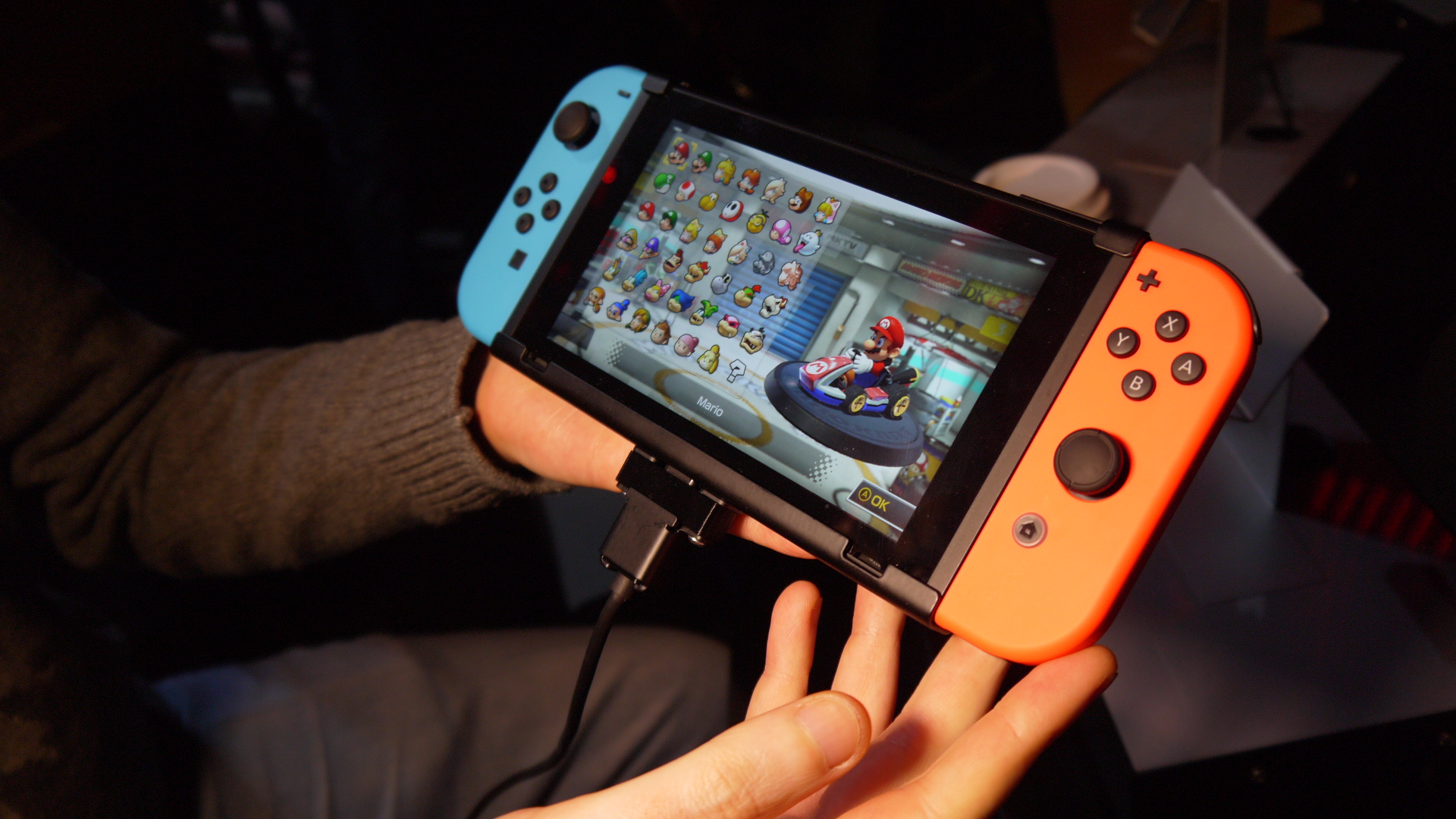
The Nintendo Switch analogue sticks also feel like a compromise between form factors: too small for a traditional gamepad, yet big enough that we wouldn't want to throw the device too carelessly into a rucksack for fear of one of them snapping off.
You do have the option of buying separate accessories which don't have these issues (the Nintendo Switch Pro controller being a prime example), but in this review we're going to limit ourselves to talking about what you get in the box, since this is the primary way most people are going to be using the console – at least initially.
One part of the Switch controllers that we absolutely love are the face buttons. They're a little smaller than those on other consoles, but they've got a really satisfying click to them that we really appreciate. The Joy-Cons feature an interesting form of rumble, which Nintendo has dubbed 'HD Rumble'. From what we've seen so far this isn’t just a marketing gimmick – it feels like a step forward for rumble tech.
One mini-game in the launch game 1-2 Switch has you milking cows, sure, but it also counts the number of (virtual) balls inside a Joy-Con. It's impressive just how well the HD Rumble creates the impression of there being real balls inside the controller. Another mini-game impresses by tasking you to crack a safe by feeling the click of a dial as you turn it.
Both mini-games have us excited for the possibilities of HD Rumble in the future, but the success of the technology depends on the ability of Switch developers to make use of it – the potential is there, but we're still waiting for a killer app. Nintendo made practical use of the feature in the Switch 3.0 OS update – if you've lost one Joy-Con but the two are still paired, you can make the other vibrate to find it.
There were initially reports of connectivity issues with the left Joy-Con on the Nintendo Switch, something which we experienced ourselves. The problem is that sometimes during gameplay, the left Joy-Con's connection just drops out completely. Fortunately, Nintendo is now offering a Joy-Con repair service for any broken ones, so we'd advise sending yours in if you experience connectivity issues of any kind.
Nintendo Switch Joy-Cons: handheld
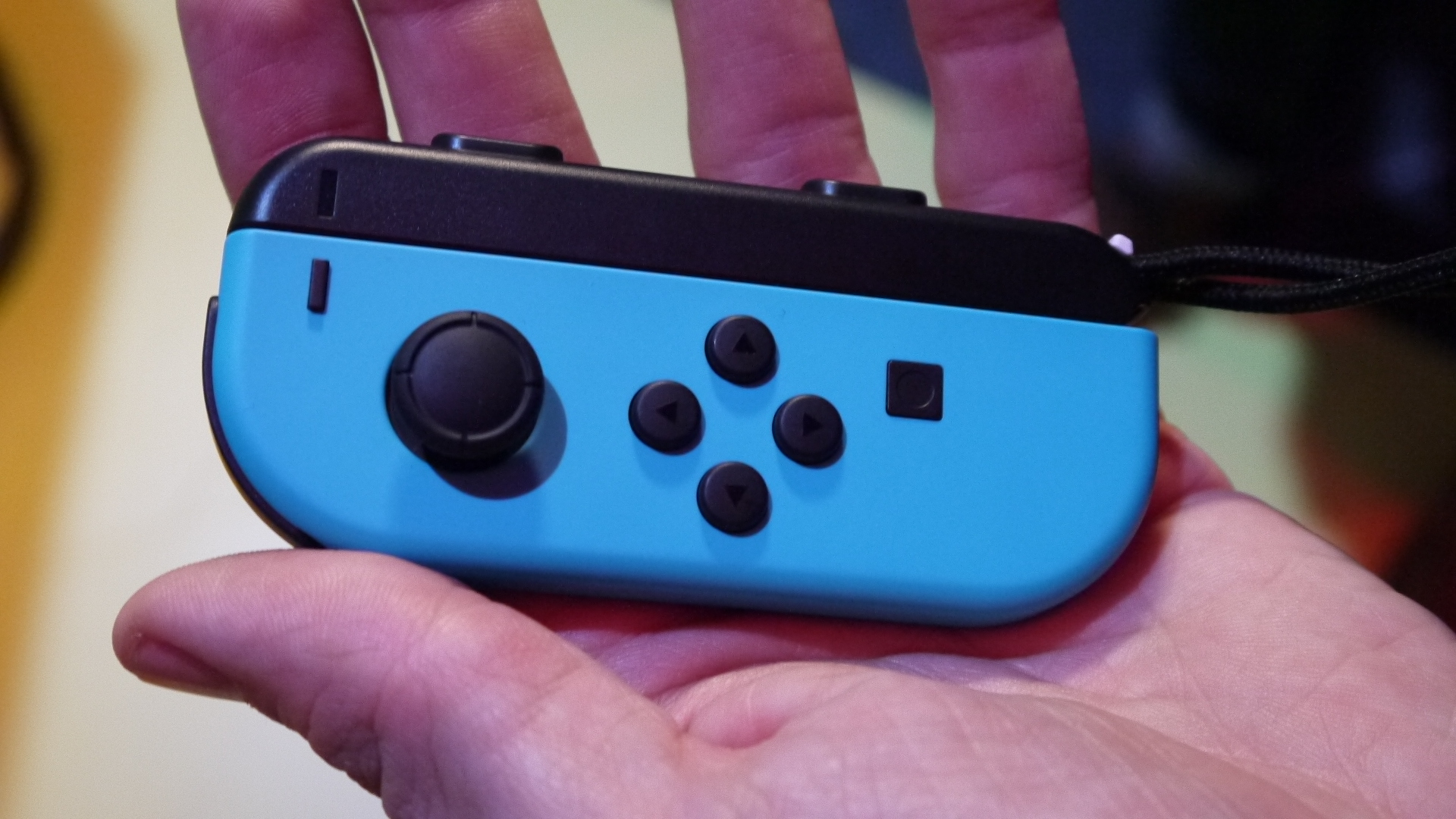
- Handheld controls are a little cramped and awkward
- Right analogue stick in particular is uncomfortable
It's in the handheld configuration that the Nintendo Switch controller's deficiencies are most apparent. The main problem is the low positioning of the right analogue stick, which we found very difficult to operate comfortably.
Either you hold the Switch precariously on the tips of your fingers in order to operate the analogue stick with the tip of your right thumb, or you hold the device more tightly and operate the thumbstick with the inside of your thumb knuckle, which feels rather cramped and awkward.
Looking back, the Vita layout is very similar, but the increased weight of the Nintendo Switch makes it much more difficult to comfortably hold on the fingertips. It's a mode that we think works in small bursts, but it's not comfortable over longer periods.
If you're gaming on Nintendo Switch on a flight, for example, we'd expect most people to opt to put the console in tabletop mode on the tray table in front of them. We are, however, fans of the shoulder buttons, which manage to feel big enough without impacting on the depth of the console too much.
Nintendo Switch Joy-Cons: grip
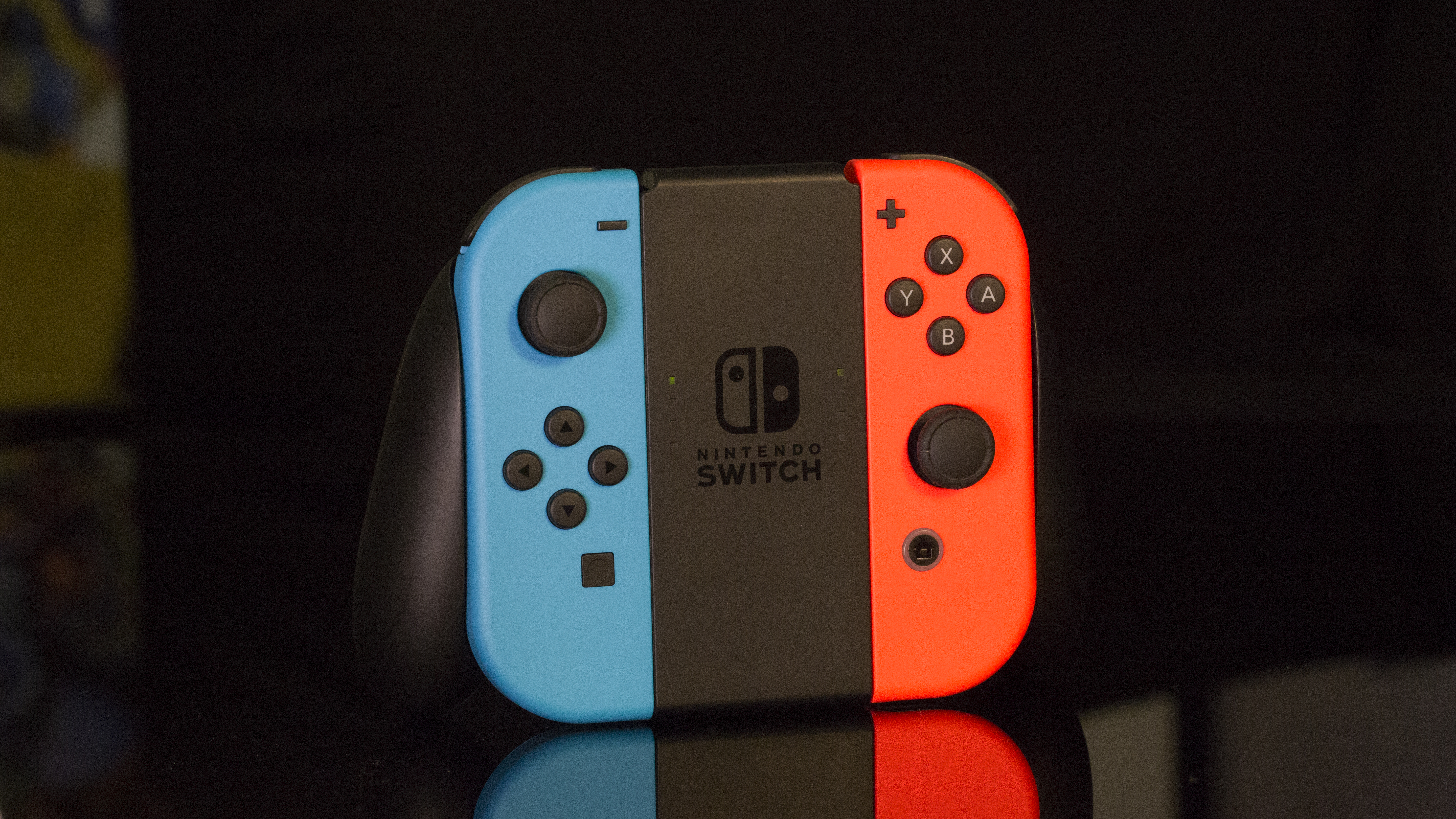
- Analogue sticks smaller than traditional controllers
- Overall the controller is comfortable and nice to use
- Clicky face buttons are especially appealing
The main way we expect people will play with the console when it's docked is by combining the two Joy-Cons together into a single controller. This is done by using the included Joy-Con grip, which the two sides slide neatly into.
We were initially concerned when it was revealed that the Joy-Con grip that comes with the Nintendo Switch is unable to charge the two controllers – this means that if you want to charge your controllers you'll need to plug them back into the console's screen.
The Joy-Cons' battery life is rated at 20 hours, so we'd be surprised if they ever run out of battery mid-game; at the same time, having to dismantle our controllers after every play session is somewhat annoying. A grip that charges the Joy-Cons is available, but this is sold separately. Aside from charging concerns, we were surprised with how the Nintendo Switch controller feels when assembled in the grip.
Although the analogue sticks are a little small, we found them perfectly usable for lengthy Breath of the Wild play sessions, and the addition of a little more plastic massively helps the ergonomics of the controller as a whole.
It's just a shame that the controller doesn’t have a proper D-pad on its left side: as it stands you're going to need to buy the Pro controller if you want that traditional Nintendo controller feel on the Nintendo Switch.
Nintendo Switch Joy-Cons: individual controllers
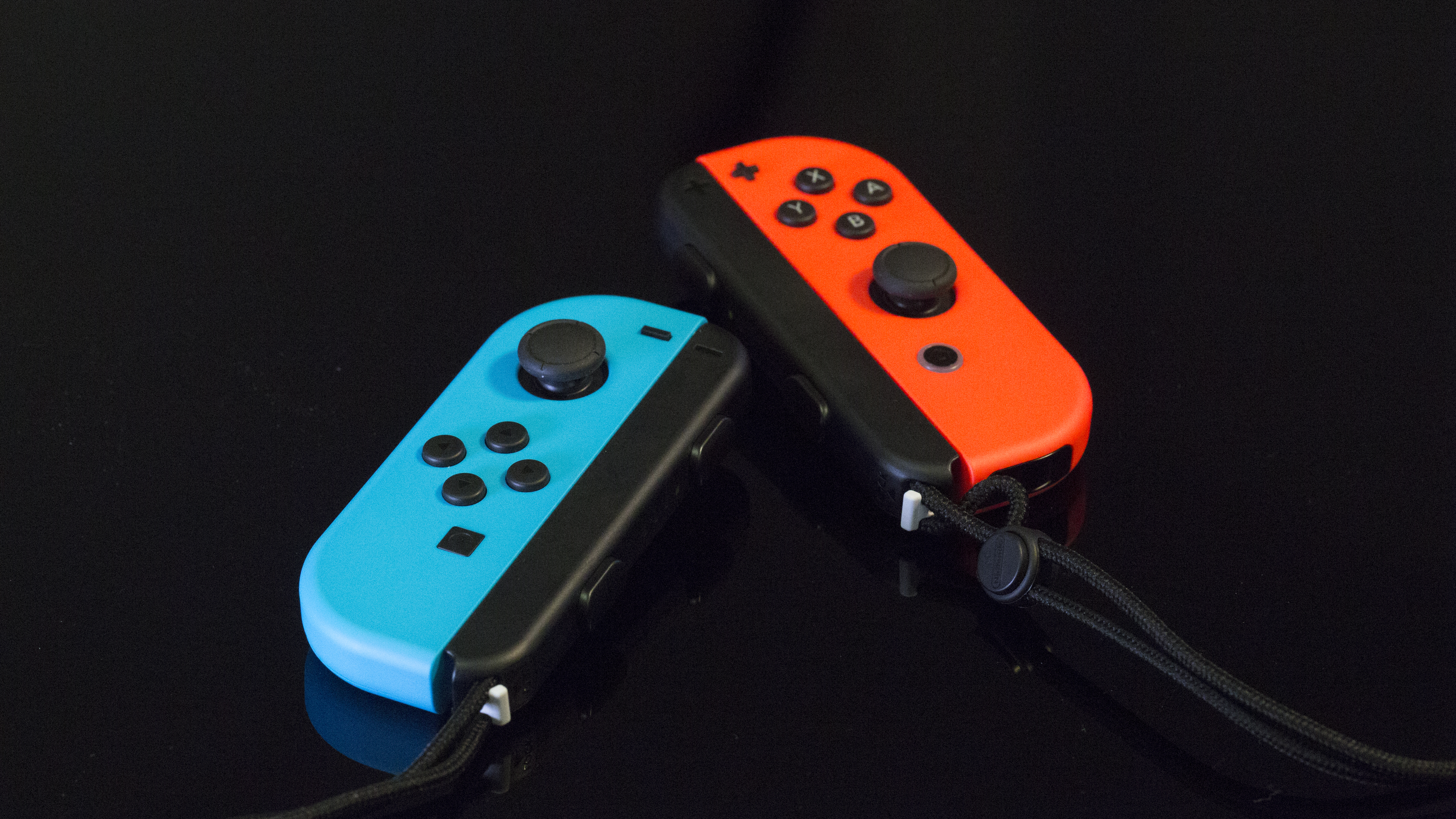
- Oddly positioned buttons due to having to work as a combined controller
- A nice option to have if you want a friend to join you for multiplayer
Split the Nintendo Switch Joy-Cons apart and they can work as individual controllers complete with an analogue stick each, four face buttons, and (if you attach a Joy-Con strap) two shoulder buttons. It's this configuration that feels like it's required the biggest compromise in Nintendo's pursuit to make them work in multiple ways.
On the left Joy-Con the D-pad/face buttons are in the centre of the controller, which means your right thumb is uncomfortably far over, and the same is true of the analogue stick on the right Joy-Con. The asymmetrical configuration also makes describing controls to another person very difficult, since the control buttons have different names between the two Joy-Cons.
The lack of hand grips is also prone to causing cramp if you use the controllers over long periods, especially if the game you're playing relies heavily on the Joy-Con's shoulder buttons. As a final point, the shoulder buttons can feel a little stiff to press, which adds to the discomfort of using them over long periods.
So while this configuration might work in a pinch if you want to let a friend join you for a couple of rounds of Mario Kart, we don't see it being something you'll want to spend a lot of time with. Additionally, you'll need to remember to carry the Joy-Con straps with your Nintendo Switch if you want to use the shoulder buttons, which will be an annoying inconvenience for most people.
Alternatively, you can use the two Joy-Cons as a single controller while split apart. Here they function identically to when they’re assembled into the Joy-Con grip, although we found it much less comfortable because of how cramped the right analogue stick ends up feeling.
Again, this feels like a compromise, this time for when you've forgotten your Joy-Con grip. We can't see ourselves using this configuration much at all unless a motion-controlled game specifically calls for it in the future.
Current page: Controllers
Prev Page Introduction, design and set-up Next Page Network and multiplayerJon Porter is the ex-Home Technology Writer for TechRadar. He has also previously written for Practical Photoshop, Trusted Reviews, Inside Higher Ed, Al Bawaba, Gizmodo UK, Genetic Literacy Project, Via Satellite, Real Homes and Plant Services Magazine, and you can now find him writing for The Verge.
- Dashiell WoodHardware Writer
- Rhys WoodHardware Editor
- Kara PhillipsEvergreen Writer
- Henry Stockdale
